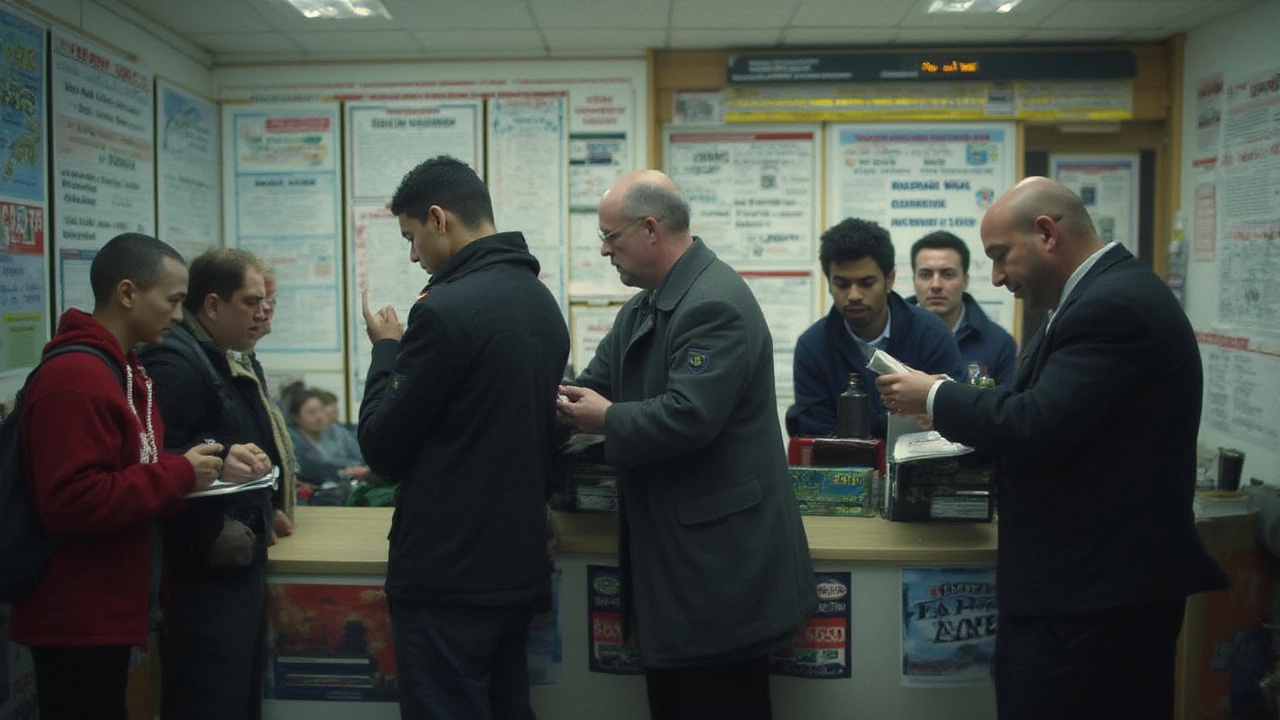Imagine standing outside the test centre, papers clutched, waiting for your name to be called. All that revision, countless mock tests, maybe even some caffeine-fuelled panic the night before—the theory test feels like a wall you just have to scale. Yet, is it truly as hard as people say, or does fear inflate its reputation? Let’s break it down to raw facts, and toss in the blunt reality and a few tricks to make the mountain feel like a hill.
Understanding the Real Challenge of the Theory Test
Most new drivers have heard the horror stories—friends failing by just one question, or harrowing tales of seasoned drivers who claim they'd never pass now. The truth? The theory test hinges on your ability to absorb facts, understand the rules, and react to hazards—not on luck. In 2024, the DVSA reported a pass rate hovering around 44%, which means more than half of candidates walk out with a slip instead of a certificate. That’s a sobering stat, but dig deeper and trends emerge: those who fail often underestimate the breadth of the material, or go in thinking common sense is enough to coast through.
The test itself is two sections: multiple choice questions and hazard perception video clips. The first bit (50 questions, need 43 to pass) covers everything from speed limits for different vehicles to the meaning of obscure road signs. The hazard perception includes 14 video clips, where you tap the screen or click the mouse each time you spot a developing hazard—like a cyclist wobbling or a car emerging from a driveway. Scoring more than 44 out of 75 gets you through this section. Easy? It can be, if you know exactly how to spot a hazard and what qualifies as one in the real world.
Now, there’s the issue of nerves. Don’t underestimate test-day jitters. I’ve seen people with perfect scores on the app flub the real thing because the pressure is very, very real. When I took mine, my palms were soggy by question seven. Breathing exercises help, and a decent breakfast does wonders for focus.
Let’s bust a myth: just because someone’s been on the roads for years, doesn’t mean they’d pass now. Rules change (think smart motorways and new signage), and many seasoned drivers admit to second-guessing themselves on the modern test.
Here’s the cold truth: if you don’t revise, it’s hard. If you treat it like trivia night after a pint, you’re rolling the dice. But if you put a plan in place and stick to it, the theory test is beatable—often on the first try.
| Year | Pass Rate (%) | Number of Candidates |
|---|---|---|
| 2021 | 55 | 1,530,000 |
| 2022 | 47 | 1,220,000 |
| 2023 | 44 | 1,170,000 |
| 2024 | 44 | 1,118,000 |
Breaking Down the Theory Test Sections
When you strip the test to its bones, it’s about two things: driving theory test knowledge and practical safety skills. The multiple-choice segment is your textbook stuff. Here, questions can feel tricky because of odd phrasing or answers that look similar. There are topics people ignore—like understanding vehicle documents or specific penalties. These question areas often separate those who’ve skimmed the Highway Code from those who really devoured it.
Some apps and study guides offer the exact same content, but the real benefit comes from mixing up how you revise. Try reading the official Highway Code, using apps for timed quizzes, and talking through trickier topics with a mate or family member. I know one guy who quizzed Miranda for weeks at dinner. She grumbled but it worked—he passed first try, while his mates who ‘winged it’ booked it again a few months later.
Hazard perception is less about rules and more about real-world instincts. This catches out a chunk of candidates. Each video shows situations developing—pedestrians, cyclists, roadworks, parked cars. You need to click (but not randomly smash the mouse or screen, as the software can flag “cheating” if it thinks you’re guessing). Official clips use a points system: the earlier you spot a hazard, the more points you get, up to five per clip. Doing it right means watching as if you’re the one driving, and reacting naturally, not robotically tapping constantly.
The most common trip-up? People think just one click per hazard is enough, but sometimes you get partial credit by clicking at the start, middle, and peak of the hazard. There’s nuance, and it pays not to rush or overthink. Remember, only one of the clips has two hazards—don’t let that one sneak up. Most app versions include official DVSA clips; don’t use apps that substitute their own graphics, as these can look and feel wildly different from the real thing.
Oddly, statistics show that more people fail the multiple-choice part than hazard perception, likely because they haven’t drilled enough or get thrown by curveball questions about fines, or what to do if your vehicle breaks down in a tunnel. Yes, ‘stop in a lay-by’ is an easier answer to remember if you’ve lived through it, but most younger learners haven’t faced these scenarios.
Don’t skip the lesser-known topics. Road markings, motorways, and rules around electric vehicles are showing up more as the UK roads modernise. Keep an eye out.

What Makes the Theory Test Seem So Tricky?
The test isn’t hard because the DVSA wants you to fail. Its job is to make sure drivers have a practical understanding of safety. The trickiness comes from a mix of nerves, the sheer volume of facts, and those multiple-choice traps designed to weed out guesswork. People tend to trip over questions about stopping distances, especially when text throws in rainy or icy conditions. But here’s a memory hack: the “two second rule” doubles in wet weather, quadruples in ice. So, four seconds for rain, at least eight for icy. Use numbers tied to real situations for easy recall.
What about the wording? The style of questioning isn’t conversational. It’s quite dry. That in itself throws people. Practice materials can help you get used to the way questions are written—sometimes the difference between two answers is just one word like “always” versus “only”.
Another trap? Getting too bogged down in ‘common sense.’ What seems obvious isn’t always the official answer. Take “when can you use the hard shoulder?” The test might want you to pick only “when directed by a sign or police,” not “when you’re tired and need a nap”—even if you reckon that’s the practical thing to do.
Then there’s the pressure to pass: theory test certificates are only valid for two years. Miss your window to take the practical, and you’re back at square one. That deadline adds extra strain, especially if you’re juggling work or school. One survey showed 3 in 10 learners delayed booking their practical test because they failed the theory, setting everything back weeks or months.
If English isn’t your first language, or if you struggle with test anxiety, ask for support. Extended times, headphones, or voice-overs are available for candidates who need them—just arrange this early, don’t wait until test day.
Most people who take the theory test with a structured plan pass within their first or second go. The mistake is often thinking you’ve ‘read the book’ and that’s enough. Active practice wins. Write mock questions on flashcards, or use apps that show your progress so you know what’s clicking (pun intended) and what needs a revisit.
Practical Tips and Honest Advice for Passing the First Time
Get tactical with your prep. The best way is to mix three things: daily practice on the official DVSA app or a reputable one that mirrors it, review of the Highway Code (especially sections you find dull—the test loves the dull bits), and actual practice with hazard perception clips. Set aside 20-30 minutes a day for a few weeks instead of cramming last minute. Repetition over time beats an all-nighter. I’ve seen too many hopefuls walk in with last-minute nerves after binge-studying the day before. Not a strategy.
Make your own flashcards or digital notes. Questions about penalties, stopping distances, and specific signs are the ones people forget because they’re not regular parts of daily driving. Use memory tricks—like associating signs with local roads or coming up with rhymes. Miranda helped me remember stopping distances with a weird chant about ‘cheese rolling faster than a Fiesta in the rain’—strange, but it sticks.
Book your test at a quieter time if possible. Early morning slots tend to be less crowded. Get your sleep and eat before you go; brains need glucose to remember the finer points of road crossings and speed signs. Bring a water bottle—it keeps you steady.
Here’s a list of practical test-day tips you actually want to use:
- Arrive at least 30 minutes early—someone is always late, don’t let it be you.
- Bring the correct documents (provisional licence etc.), or you won’t get to sit the test.
- Wear something comfortable. Sweatpants are underrated on nerve-wracking days.
- Breathe. When you feel panic rising, pause, and take three deep breaths.
- If you don’t know the answer, flag the question and move on, then come back.
- Watch for trick phrasing—‘must’ versus ‘should’ catches loads of people.
- On hazard perception, don’t over-click or mindlessly tap—be natural.
- If you fail, book again quickly while it’s fresh. Statistically, you’ll do better next time.
A common question—how much revision does it really take? Most people report needing 10-15 hours across a couple of weeks to feel genuinely ready. If you score 90% or better in mock tests, and can nail tough topics like crossings and motorway protocols, you’re probably there. If not, don’t rush; an extra week is a minor delay compared to failing and starting again.
Remember why you want to pass: freedom, independence, a shot at better jobs or out-of-town weekends. That motivation keeps you working through those last 20 questions that just won't stick. And if you get stuck, find a friend to quiz you. Once you can teach someone else, you really know your stuff.
So, is the theory test hard? It’s only as tough as your prep is light. Respect the process, build good habits, stay calm, and the odds swing in your favour. Good luck out there.

